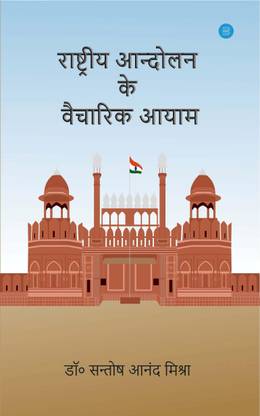Maharana Pratap Singh (9 May 1540- 29 January 1597)
Introduction
Many brave men were born in the pages of Indian history, but there were some who became immortal for ages due to their courage, self-confidence and love for freedom. Maharana Pratap was one such great man, who chose a difficult life and struggle instead of bowing down to a powerful ruler like the Mughal Emperor Akbar. He was not only a brave warrior, but also a protector of freedom, self-respect and motherland. His entire life is an example of patriotism, self-esteem and valor.
Dynasty and Birth
Maharana Pratap was born on 9 May 1540 in the Sisodia dynasty of Mewar in Kumbhalgarh Fort (Rajsamand, Rajasthan). His full name was Prithviraj Singh, who later became famous as Pratap Singh and then Maharana Pratap. His father was Rana Uday Singh II and mother was Jayavantabai. The Sisodia dynasty is considered to be the most prestigious of the Kshatriya clans, which always protected freedom and religion.
Early education and qualities
Pratap was brave, courageous and self-reliant since childhood. He was adept at horse riding, swordsmanship, archery and warfare. He lived a simple life and had a fighting nature. When his father wanted to declare his other son Jagmal as his successor, Pratap was finally handed over the throne over the opposition of the courtiers and feudal lords. This is proof that Pratap had great leadership, organization and policy capabilities.
Ascension of Maharana Pratap
Maharana Pratap became the king of Mewar in 1572 AD after the death of Rana Udai Singh. By his time, most Rajput kings had accepted the suzerainty of the Mughal emperor Akbar. But Pratap, considering his self-respect paramount, never accepted Akbar's sovereignty. Akbar tried to convince him through several emissaries — including Raja Todarmal, Jalal Khan and Man Singh — but Maharana Pratap's answer was always the same: "We can sacrifice our lives for the honor of our motherland, but we cannot accept slavery."
Battle of Haldighati - The Great War of Independence
On 18 June 1576, a fierce battle took place between the Mewar and Mughal armies at a place called Haldighati. This war is a chapter in the history of India, which witnessed the pinnacle of courage and self-respect. Pratap's army included brave soldiers like Chief Commander Hakim Khan Sur, Bhil leader Punja, Jhala Maan and Daulat Khan. Pratap's horse Chetak showed his bravery in the war, who despite being injured, took Pratap out of the battlefield safely. Maharana Pratap's eyes became moist on Chetak's death.
The war may not have been decisive, but the message spread throughout India that warriors like Pratap still keep the flame of freedom burning.
Exile and hard life
After Haldighati, Maharana Pratap troubled the Mughals through guerrilla warfare by living in forests, mountains and caves for years. He even ate grass rotis due to lack of food, but never accepted Akbar's subordination. There is a famous story that when the queen scolded him after seeing his children suffering from hunger, Pratap prayed to God - and this was the moment when a Patwa merchant named Bhamashah donated all his wealth to Maharana. With this support, Pratap reorganized his army and continued the fight for independence.
Allies like Bhamashah and Gogunda
Patriotic allies like Bhamashah kept Maharana Pratap's fight alive. Bhamashah gave so much money that the needs of 25,000 soldiers could be met for 12 years. This cooperation was not an ordinary event, it is a symbol of the patriotic spirit of that era.
Capital and revival of Chavand
Maharana Pratap made Chavand his new capital and from there started reconquering the areas under Mughal influence. Gradually he liberated most of the territory of Mewar. He made a special contribution in the reconstruction of the administration, forts, temples and public life.
Death and succession
Maharana Pratap died on 29 January 1597 in Chavand. His last words at the time of death were - "I could not save Chittor, it will remain a burden on my soul." His son Amar Singh later entered into an agreement with Akbar's successor Jahangir, but never allowed Pratap's image of dignity and independence to be tarnished.
Characteristics of Maharana Pratap
Indomitable courage - bravery in every situation.
Love for freedom - highest place for self-respect.
Justice – never discriminated on the basis of religion, caste and class in his kingdom.
Prajatvatsal Raja – bore the sufferings of his subjects himself.
Dharmrakshak – equal rights to all Hindus, Muslims, Bhils in his kingdom.
Public memory and honour
Many memorials have been built by the Rajasthan government, such as Maharana Pratap Smarak (Moti Magri, Udaipur).
The Indian Postal Department has issued a postage stamp in his honour.
Many educational institutions, roads and schemes in India have been named after him.
In 2007, the Government of India started the Maharana Pratap Rashtriya Samman.
Conclusion
Maharana Pratap was not only a great warrior, but also a principled, self-respecting and ideal ruler who dedicated his life to public service. His life is a symbol of the fact that no sacrifice is too great for the freedom of the nation. Today's generation can understand the meaning of self-respect, self-esteem and patriotism by taking inspiration from his life.












0 Comments
Thank you